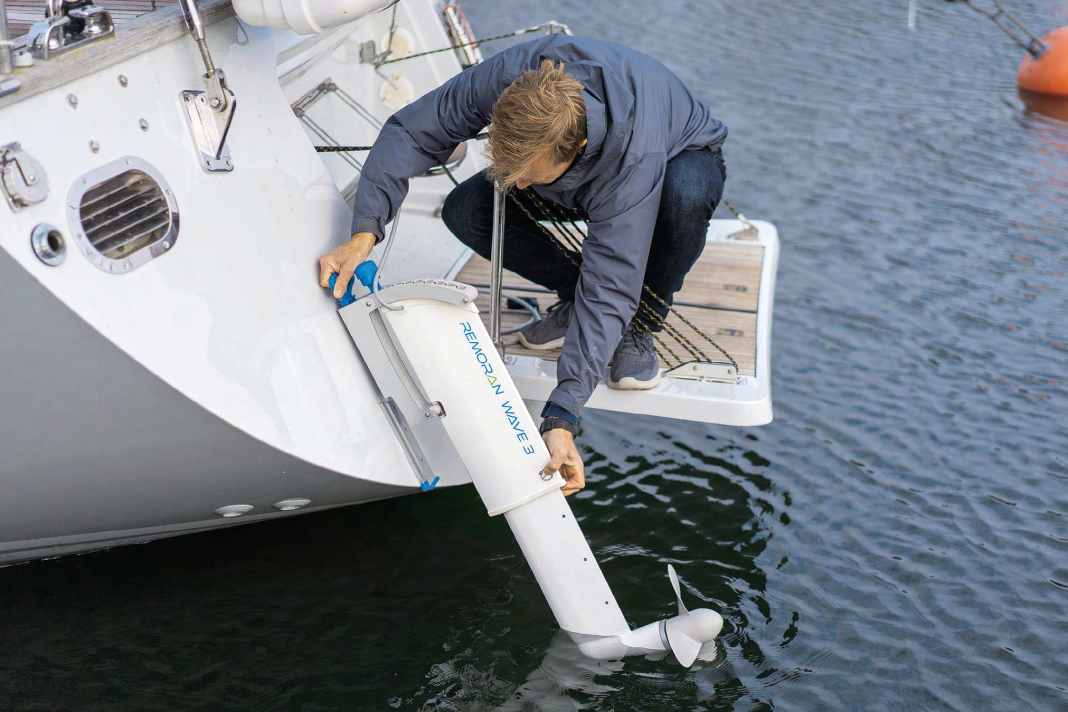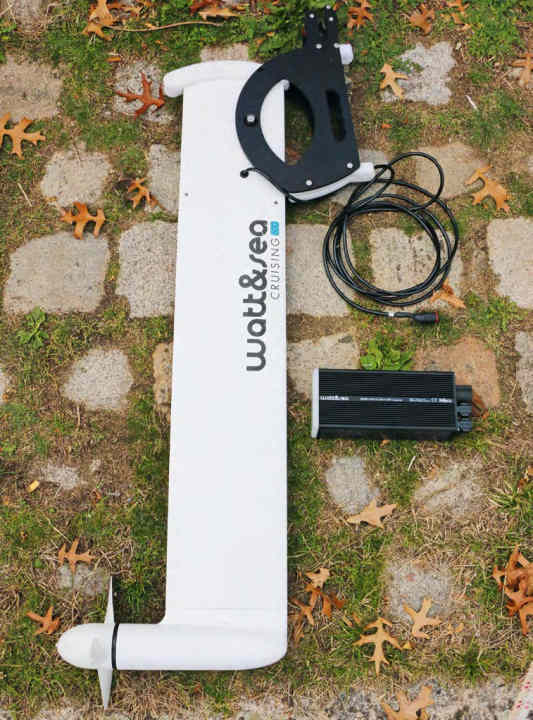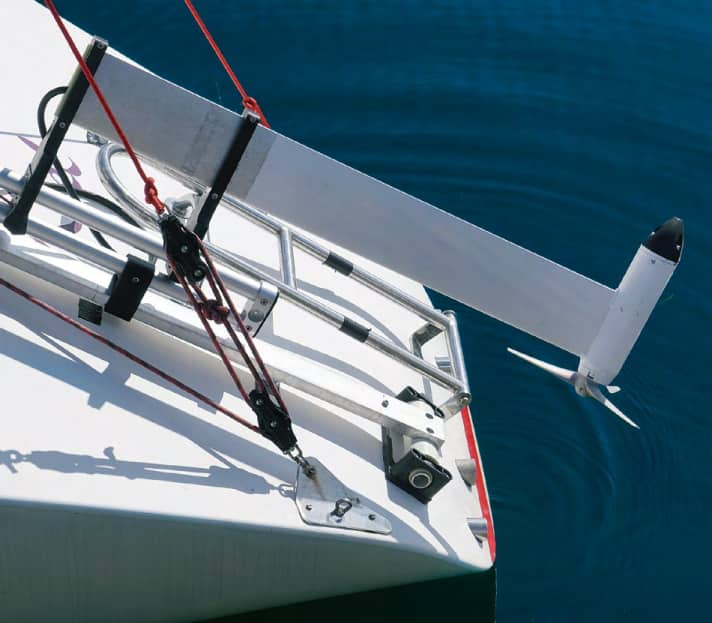Towed generator: Remoran Wave 3 - Hydroelectric power station for the mirror
YACHT-Redaktion
· 24.05.2023



The battery capacities on most standard yachts are not exactly generous. If you want to spend more than a day or two away from marinas, perhaps even a few weeks or months on a long voyage, you need to look for alternatives to the blue socket in the harbour to keep the on-board batteries in the green zone.
With ocean racing yachts such as Boris Herrmann's "Malizia-Seaexplorer" and their competitors in the Imoca class, hydrogenerators have long been commonplace. A prototype was used for the first time at the 2008 Vendée Globe, and a production-ready model was launched in 2009. Several Open 60s were equipped with this for the Barcelona World Race 2010/11. Boris Herrmann, who had two of these hydrogenerators on board, said enthusiastically at the time: "In ten years' time, it will certainly be impossible to imagine a sailing boat without the hydrogenerator. We always had plenty of energy. A brilliant feeling!"
He was proved right - they have also become increasingly common on cruising yachts over the last ten years or so. The system sounds perfect: the shaft with propeller hanging in the wake should supply a lot of power - and generate as little loss of speed as possible. Since then, the generators have not only been further developed for regattas, but also for cruising yachts. With its Wave 3, the Finnish company Remoran has now launched a new trolling generator for stern mounting on the market.
Wave 3 tug generator from Remoran
The model is similar to products from other manufacturers, but has a few special features. These include the attachment to the rear using a small aluminium rail. The generator itself is simply pushed on and snaps into place. The height is adjusted via the telescopic housing. This allows the generator to be simply pushed together for storage. The bracket can be tilted by up to 40 degrees in nine stages to compensate for play. The generator weighs 7.2 kilograms and is designed to deliver an output of 300 watts. Two versions are available, depending on the speed potential of the boat. The GS version is optimised for the range between three and ten knots and is designed to charge at 150 watts at six knots. The GD model works up to 20 knots. The control is automatic and has charging characteristics for all standard battery types including lithium iron phosphate. 12-volt or 24-volt systems are automatically recognised and the charging process can be monitored via an app. Price for a set with holder and charge control: 2,800 euros.
Alternatives on the market
Watt & Sea

Various versions and propellers are available depending on the intended use and speed range. The cruising version is designed to deliver more than 100 watts from five knots. The maximum output is 300 or 600 watts, depending on the model. Two shaft lengths are available to adapt the immersion depth to the boat. Depending on the bracket, the generator can be folded up or removed completely. Price: around 3,770 euros.
Ocean Power

The hydrogenerator is designed to generate electricity from a speed of just three knots. At five knots through the water, the manufacturer claims 6.5 amps at 12 volts. The hydrogenerator is also said to be particularly robust. This is achieved, among other things, by the fact that the rotor and the outer winding of the generator are individually encapsulated and there is no seal between the propeller shaft and the housing. The idea is that where there is no seal, there can be no leaks. Price: 1,998 euros.
